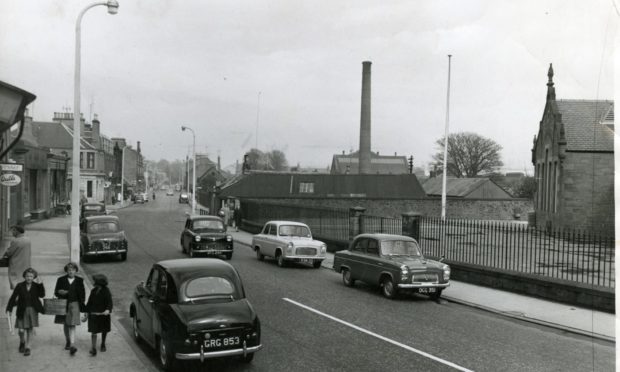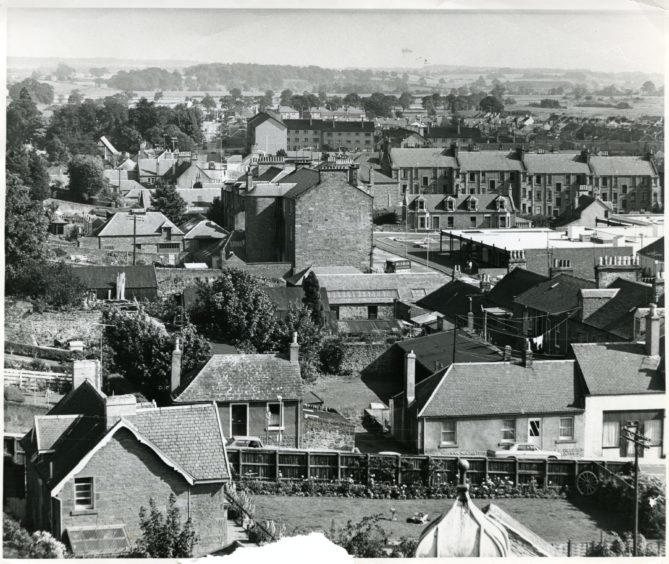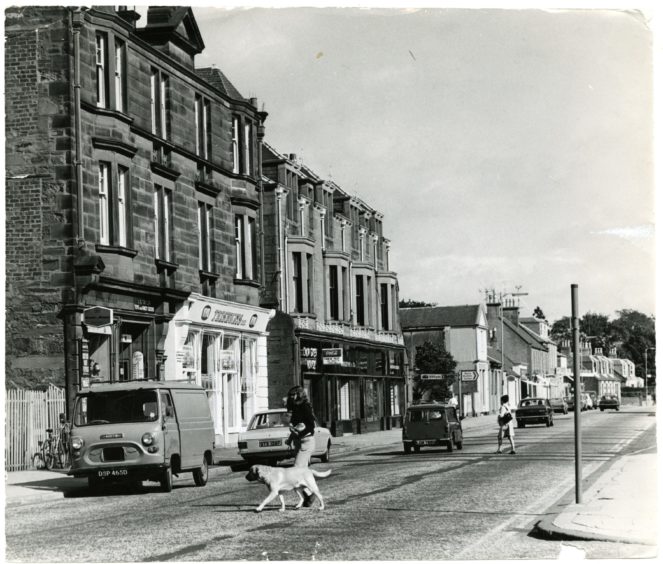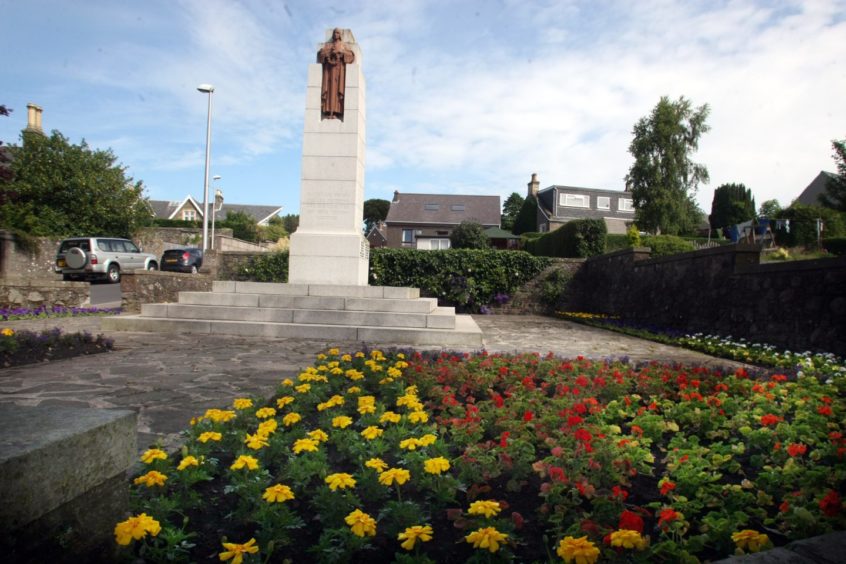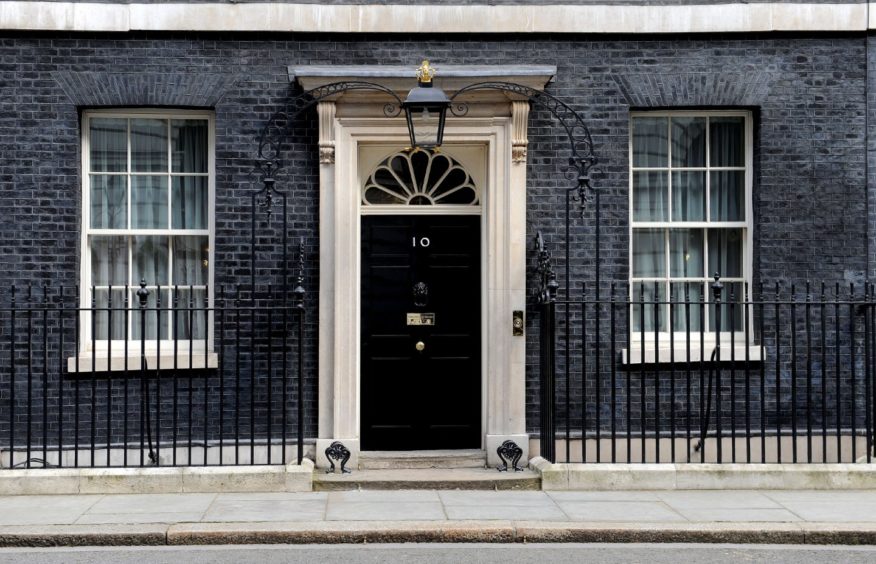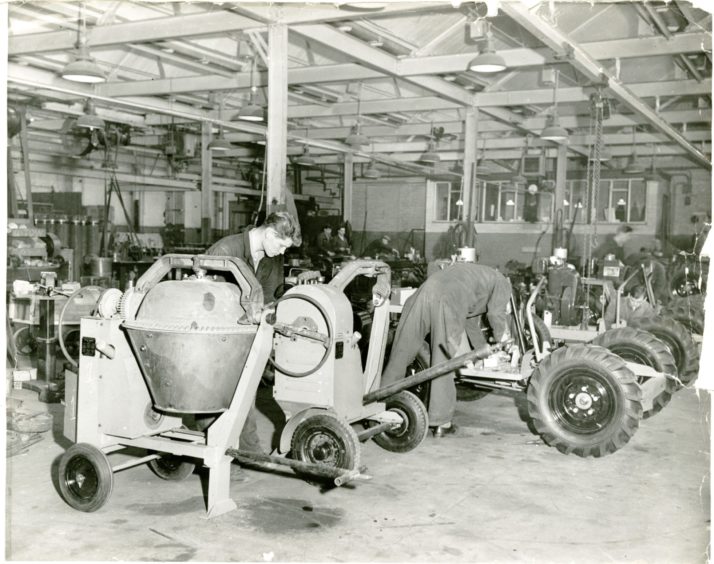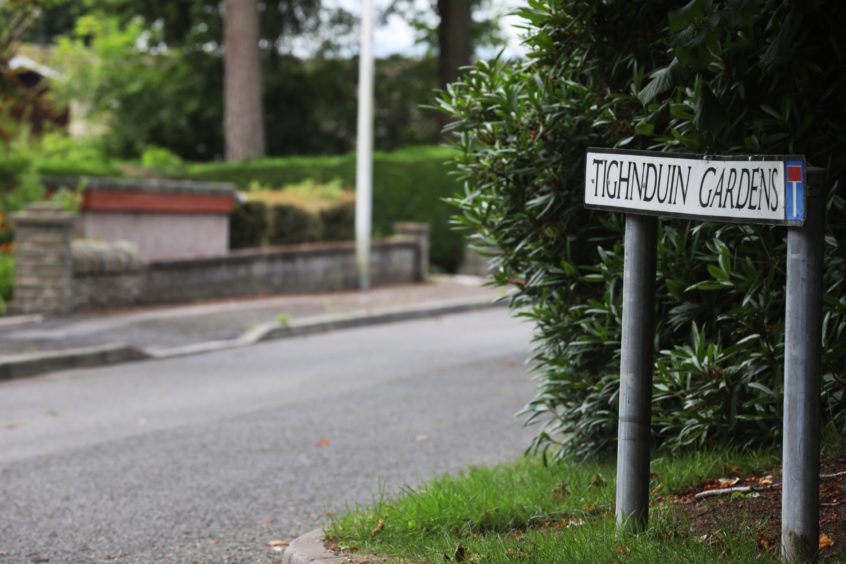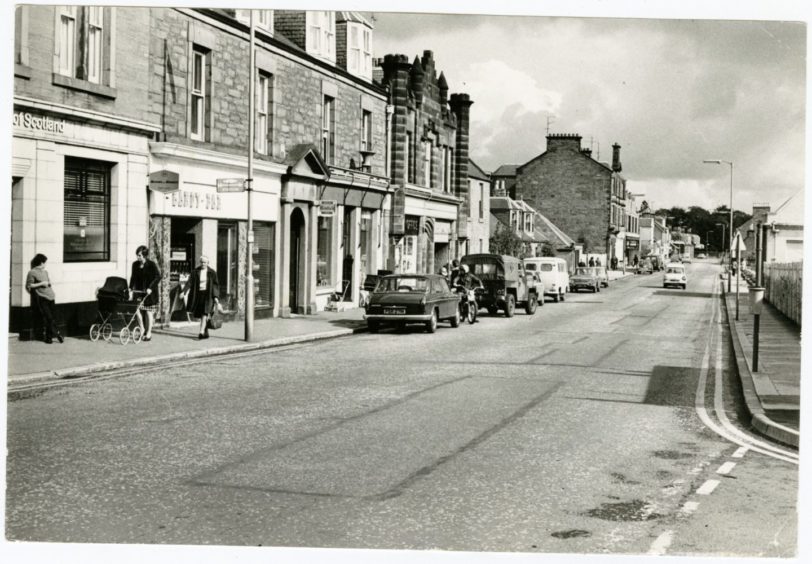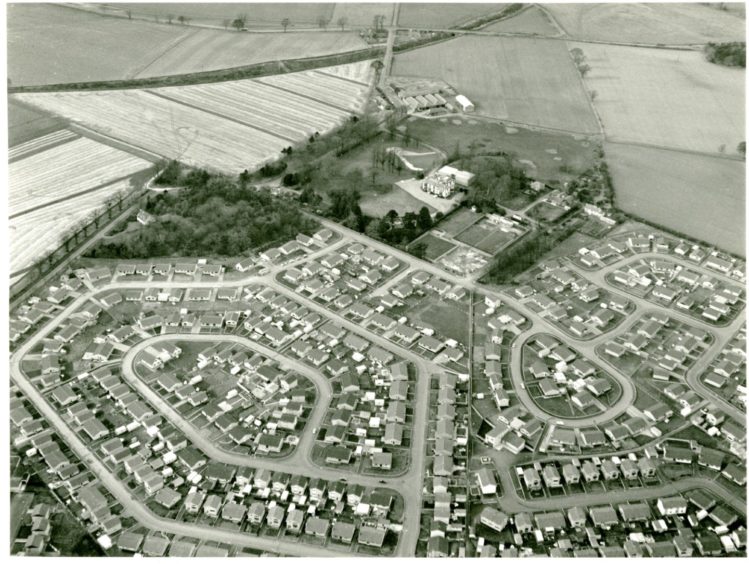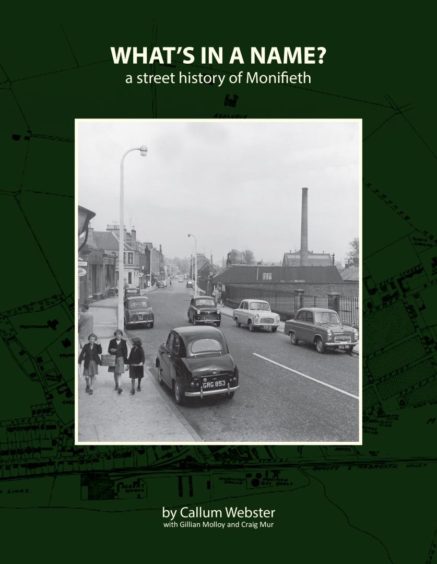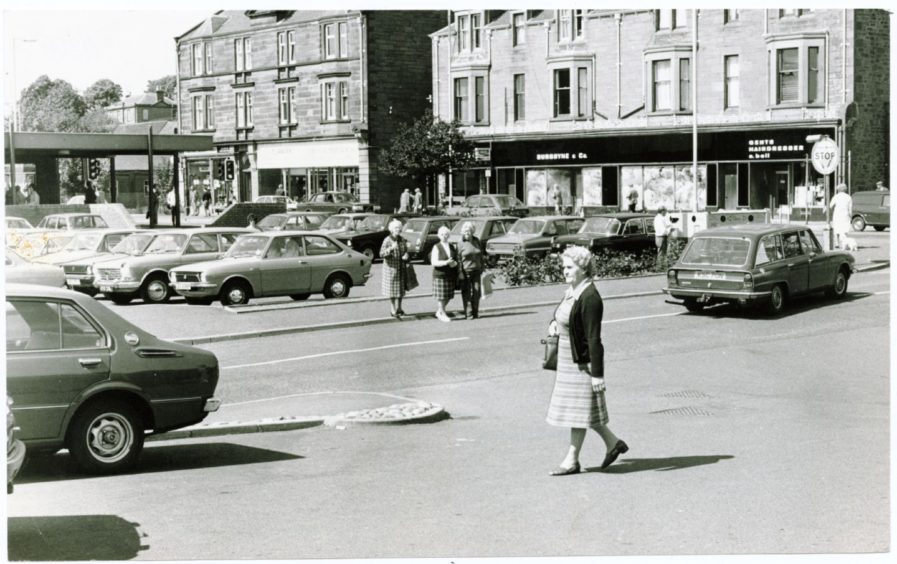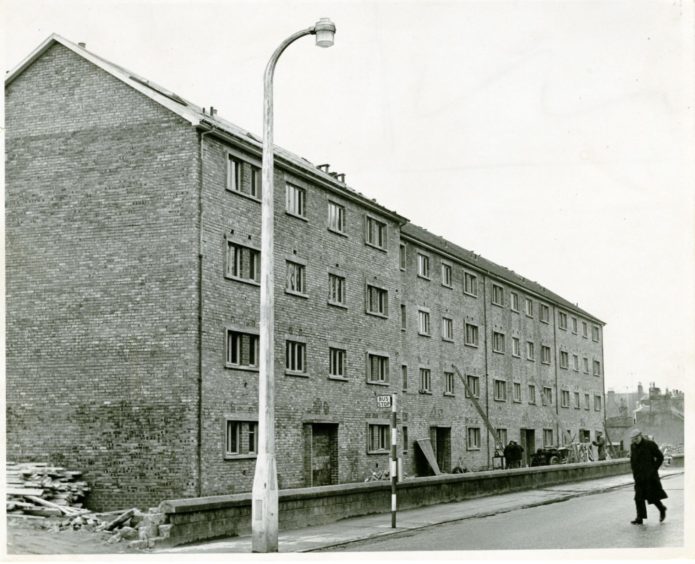From booze-smuggling barmaids to golf-obsessed jute barons, a new book reveals the story behind every street name in Monifieth.
The book, What’s in a Name? A Street History of Monifieth, is illustrated with drawings by the late Colin Gibson and vintage photographs.
It tells the history behind the landmarks, factories, mansions, shops, and churches that featured in the life of the town.
The book also reveals some of the characters who had lived in Monifieth, including: a barmaid who hid smuggled booze in her bed; a girl who became a housemaid in Downing Street; three men who became golf professionals in the USA; a millionaire jute baron who founded a golf club in Ireland; two former residents who were elected as Labour MPs; and a thief deported to Australia for stealing a bed sheet.
It traces Monifieth’s history from Pictish times, through the Industrial Revolution, to its development as the golfing resort and suburban town of today.
It includes details about Grange House, Ashludie, the Laws fort, Monifieth Foundry, Milton Mill, the golf links, the font stone, and many other local features.
Written by Callum Webster, with Gillian Molloy and Craig Muir, it is a sequel to the book, What’s in a Name? A Street History of Broughty Ferry, published in 2014.
“Most people today know Monifieth as a popular suburb of Dundee with a golf course, but the town has a rich history tracing all the way back to the time of the Picts,” said Callum, 43.
“By the 1790s Monifieth was a village of 175 people mainly working as cottage weavers and crofters. Now it has a population of approximately 9,000.
“The industrial revolution led to foundries and manufacturing opening in Monifieth bringing employment for local people and attracting new workers from other places.
“The coming of the railway in 1838 and the tramway in 1905 facilitated commuting in and out of Dundee.”
The book is £12 and copies are available at Troup’s Pharmacy, Ashludie Pharmacy, and Eduardo Alessandro in Broughty Ferry.
Profits from sales will be donated to the Friends of Dundee City Archives.
Here are some of the stories included in the book…
The booze-smuggling barmaid
James Baird (1791-1866) was a shoemaker who lived in the properties at 34 Maule Street, next to where Monifieth War Memorial now stands.
To bolster his income James ran a tavern from the house in the evenings.
According to local folklore, many a keg of spirits and a bale of tobacco found their way to the tavern when customs and excisemen were not about.
A signal was hoisted from the inn to tell sailors aboard vessels in Monifieth bay that the coast was clear.
One evening in 1820 the ale house had just received a “delivery” when customs officers called unexpectedly.
Panic ensued and the barmaid Barbara Soutar quickly hid the contraband goods in her bed.
When the officers came to search, Barbara so berated the excisemen for intruding into her bedroom that they were forced to make an ignominious retreat!
The girl who became a maid in 10 Downing Street
Isabella Boyack (1891-1978) was a local girl who went into domestic service on leaving school.
She became a housemaid in 10 Downing Street while Herbert Asquith was Prime Minister during the First World War.
She later went into service as lady’s maid for American heiress and socialite Alice Astor.
On her retirement Miss Boyack came back to the area and lived in Ritchie Avenue, Monifieth.
She bequeathed quarter of a million pounds to Monifieth and the Boyack Fund has benefited many local causes in the town.
Boyack Crescent is named after Isabella Boyack.
Three local men who became golf professionals in the USA
George O Simpson was brought up in 9 Dalhousie Street. His father worked in Monifieth Foundry.
In 1907 George won the Scottish Amateur Golf Championship and emigrated to the USA to further his golfing career.
He tied for the Western Open Championship in 1910 and tied in the US Open in 1911.
He held posts as golf professional at Wheaton Golf Club, La Grange Country Club, and Ohama Country Club but died in Chicago when he was in his early 30s.
Meanwhile, William Robertson was brought up in 6 Lorne Street. His father was a jeweller and watch seller in Monifieth. William because a golf professional and golf course architect at Pontiac, Michigan, USA.
William’s brother Henry Robertson won the Telegraph Cup when he was 19 and played all over the Monifieth golf course.
He opened a golfing school at St Louis, Missouri, USA. Before emigrating he served with the Highland Cycle Battalion during the First World War, serving in the rank of Captain.
The millionaire who set up a golf club in Ireland
Tighnduin Gardens in Monifieth is named after the mansion Tighnduin, in whose grounds it is built.
The mansion was completed in the mid-1870s and at one time was the residence of jute baron Thomas Macintosh Gilroy.
Thomas’s father and uncles were the proprietors of Tay Works jute firm in Dundee.
In 1883 TM Gilroy sold Tighnduin and retired to Ireland, living at Mornington House near Drogheda. There he created a small golf course on his estate and established County Louth Golf Club.
Interestingly the next owner of Tighnduin had Irish connections too. He was jute merchant David Wybrants, proprietor of North Dudhope Works in Dundee. Wybrants had been born in County Offaly in Ireland.
About the authors
Callum Webster was brought up in Broughty Ferry and educated at Grove Academy.
He studied Modern History at Dundee University and now lives in Belfast.
The book was compiled as part of a local and family history project which Callum began after moving to Northern Ireland more than twenty years ago.
In 2014 Callum authored the book, What’s in a Name? A Street History of Broughty Ferry.
“I grew up in Broughty Ferry with grandparents living in Monifieth,” said Callum.
“I moved to Belfast in 1999 to start my first job and still live in Northern Ireland.
“I started tracing my family trees and local history as a hobby when I moved to Northern Ireland – in order to keep up my links with home.
“The Broughty Ferry book was the culmination of much of that research.
“I thought that all this local information would be better shared with local people rather than sitting in files in my spare room and on my laptop.
“It must have been interesting to people because it sold so many copies and had to go to a second edition.
“Someone then suggested that I write a similar book on Monifieth, so information was drafted over the last three years and lockdown provided the much-needed time to complete it.
“I worked with Craig Muir, who is based in Broughty Ferry, and he did the design and layout of it and sorted the illustrations.
“I also worked with Gillian Molloy who lives in Monifieth and had done some research of her own on street names and gathered information from the old Monifieth Burgh Council minutes.
“Old photographs to illustrate the book were provided from the collections of Monifieth Local History Society, the George Washington Wilson Collection, Canmore (Historic Environment Scotland), DC Thomson Archives, Mrs Margaret Copeland, Mr Jim Howie, and Mrs Gillian Zealand.
“Also some sketchings by the late Monifieth artist Colin Gibson (1907-1998) were kindly donated by his daughter.”
Gillian Molloy was born in Dundee and educated at Morgan Academy. She has lived in Monifieth for most of her adult life.
In 2019 Gillian published a book “Street Names of Old Dundee”.
Craig Muir was born in Dundee and educated at Grove Academy. He has a keen interest in local and architectural history.
